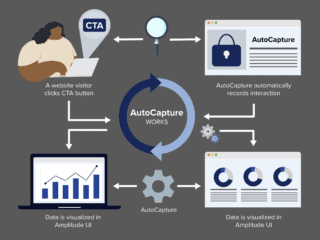As data privacy laws around the world become more stringent and users become more aware of how brands collect data on their browsing behavior, it’s common for organizations to wonder how these developments might impact their analytics programs. Fortunately, with the latest version of Google Analytics – Google Analytics 4 (GA4) – you’ll now have greater control over what data you collect, and when, allowing you to have greater confidence that you’re managing analytics while respecting user privacy.
In particular, GA4 allows you to enable or disable the collection of two specific categories of data — location data and device data — on a country-by-country basis. In this post we’ll talk about why collecting it can be valuable, why that data can be sensitive, and how to enable/disable the collection of that data as you see fit.
How Location and Device Data is Collected
GA4 collects a variety of data about your site and app visitors, much of which is generally not considered to be sensitive. However, data about a person’s location and device is sometimes considered sensitive or “personal.” Location data can include information about which country, province/region/state, or city a user is located in, as shown below.
Device data includes device category (whether a user is using desktop, mobile, or tablet), and can sometimes also include operating system, device model, device brand, and browser. Google collects location data based on users’ IP addresses, while device data is tracked with what’s known as a User Agent Header – a string that Google uses to identify users’ device information.
Why Location and Device Data Can Be Useful
This data can be valuable to marketers for several reasons. For example, using location data, marketers might be able to see if a particular region is underserved, has higher conversion rates than average, has more spending by users than average, etc. Marketers could then create addressable audiences based on users in these specific regions, and then target these audiences in Google’s media-buying platforms. Check out our recent blog post to learn more about audience creation and management in GA4.
In terms of device information, marketers might be interested in knowing which device types, brands, operating systems, and browsers an individual is using, as well as user engagement across each of these technologies. If a particular technology (such as a browser or device model) is performing poorly, that might indicate user experience problems of some kind. For instance, data like this could suggest that the website renders incorrectly in certain browsers, that the app crashes more often for certain versions of Android or iOS, and so on. Marketers – or other stakeholders, like IT – could use these insights to resolve user experience issues and perform other optimizations based on this data.
Disabling the Collection of Location and Device Data
So, why might an organization want to disable the collection of granular location and device data by Google Analytics for certain countries? In terms of public sentiment, a 2021 study by KPMG found that 86% of respondents felt a growing concern about data privacy, while 68% were concerned about the level of data being collected by businesses. This concern among the public — which is growing around the world — has led to a variety of relatively new regulations and laws concerning data privacy. Some of those regulations call into question the possibility of collecting detailed information about a user’s location and device.
Given that privacy regulations are changing all the time, and vary from country to country, it can be difficult to know whether you should collect granular location and device data in any given market. Fortunately, GA4 gives organizations the flexibility to enable or disable the collection of this data on a country-by-country basis ‒ enabling collection of valuable data where possible while respecting local regulations as needed.
If you disable location and device data collection for specific countries, Google will stop collecting data on the following dimensions:
- City
- Latitude (of city)
- Longitude (of city)
- Browser minor version
- Browser User-Agent string
- Device brand
- Device model
- Device name
- Operating system minor version
- Screen resolution
So, how do you actually disable location and device data collection for specific countries? Here’s a list of steps you’ll need to take in GA4:
- Click Admin in the bottom-left corner of GA4.
- Under the Property column, hit Data Settings, then Data Collection.
- To enable or disable granular location and device data collection for specific countries, click Granular location and device data collection, then click the gear button.
The Trade-Off
In this post, we covered how location and device data collection in Google Analytics works and how GA4 allows you to disable it for certain countries based on ever-changing privacy regulations and user preferences. But, how do you determine which countries to disable location and device data collection for? Ultimately, that comes down to the advice of your legal advisors.
There’s a clear trade-off at play here. While collecting location and device data may give you more insights that you can use to optimize performance, you certainly don’t want to find yourself on the wrong side of any local regulations. In general, we recommend that organizations not collect data in the absence of a clear use case. Do you have a specific plan to use granular location or device based data? If so, proceed — as long as you’re satisfied that you can do so while complying with local regulations. On the other hand, if you’re not sure you’d ever use this kind of data, we wouldn’t recommend that you collect it at all. If, in the future, you decide that you do have a genuine need for it, you can always enable data collection at that time. By avoiding unnecessary data collection, you can feel more confident that you’re managing your Google Analytics deployment in as privacy-safe a manner as possible.

















